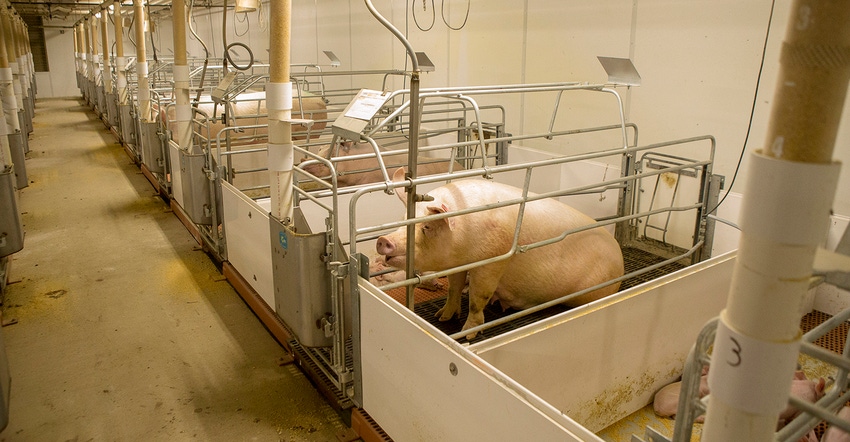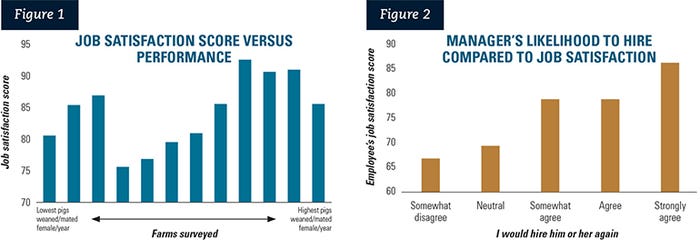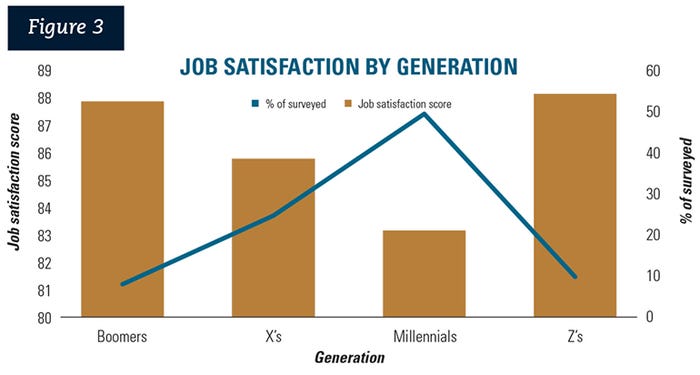Labor intelligence study leads to identifying characteristics of an irresistible workplace.
February 12, 2020

Ed Bahler, the founder of Summit SmartFarms, often talks about a quote his father hung on the wall of his home office. It was from Thomas Edison, and it said, "There is a way to do it better; find it."
This was ingrained in him from a young age, and Bahler is committed to that to this day: the process of continuous improvement. That is what Summit SmartFarms is all about, bringing tools to the agriculture industry that can assist with continuous improvement of production — and more importantly, the development of people.
Job satisfaction impact
With support from industry partners, Summit SmartFarms conducted a labor intelligence study in 2019. The study included 103 team members assessed across 12 farms that came from seven systems representing about 5% of the U.S. sow herd. The objective was to understand the impact of different personality and psychological profiles of teams with high and low performance.
There were a few items that we, Summit SmartFarms executives, thought would have an impact on farm performance that didn't. Those included staff age, experience and pay.
On the other hand, one of the key findings was the impact of job satisfaction on performance. In a regression analysis conducted by Justin Wiegand of Sift HR, for each point of improvement in job satisfaction, there was an improvement of 1.08 pigs weaned per mated female per year.
Figure 1 shows the average job satisfaction score for each of the 12 farms surveyed. They are ranked from the lowest number of pigs weaned per mated female per year on the left, to the highest on the right; the 12 farms ranged from 22.7 to 32.0 pigs weaned per mated female per year for the 12 months before the study. Four of the farms were at 27.5 pigs weaned per mated female per year or higher, and those farms averaged 90.1 for job satisfaction, compared to the average of the study at 84.4.

Likelihood of rehiring
Another finding from the study was the relationship between the likelihood of a manager to rehire the person, and that person's job satisfaction. The more likely the manager was to rehire the person, the happier the person was in their job. This is displayed in Figure 2.
This is an indicator that as a leader, if you are not happy with a person's performance, you should address this — which can be very difficult to do. By ignoring the situation, however, it only becomes worse and often leads to a team member leaving.
Pay, performance unrelated
Through the study, it also became apparent that at least within these systems, pay is based on time with the company more than it is the person's actual performance. In the table below, the average wage level, minimum wage level, maximum wage level and average years of experience are shown by position. There are several technicians who are being paid considerably more than their supervisors.

As previously mentioned, pay didn't determine performance; but if people aren't rewarded through pay for taking on more responsibility, then how are they being rewarded? In this study, all managers were on salary compensation and not hourly. For the purpose of comparison, their pay was converted to hourly, based on a 48-hour workweek for 52 weeks a year.
Lead position issues
Another notable takeaway from these data is the gap in experience between leads and managers. Breeding leads had the same experience as the breeding and farrowing technicians, while the farrowing leads had three years' more experience than the technicians.
However, the 12 farm managers had 16.2 years of additional experience compared to the farrowing leads. This raises the question, why are people not staying in lead positions?
Finally, in the table titled "Job Satisfaction Based on Position," when looking at the job satisfaction based on position, the managers indicated they were the most satisfied, while the leads were the least satisfied. This is a concern, because the leads are often the most responsible for farm performance and turnover due to their day-to-day interaction with staff. What tools do leads need to allow them to be more satisfied and successful in their positions?
Working with various ages
A popular discussion in all industries is the struggle of meeting the needs of all the generations in the workplace today. In Figure 3, job satisfaction scores are broken out by generations in the tan bars. The line represents the percentage surveyed that were in each generation. In this study, 50% of those surveyed were millennials and have the lowest job satisfaction at 83.2, versus the study average of 84.4.

The book "It's the Manager," by Jim Clifton and Jim Harter, shares that the way in which people view their job and career has changed. Millennial and Generation Z employees are now looking for the following:
They want to work for a purpose, not just a paycheck.
They are more interested in development than free food.
They desire a coach and not a boss.
They want continual feedback on performance, not an annual review.
They want to develop strengths and not focus on weaknesses.
A job is no longer a job, but their life.
These needs really aren't that difficult; it is a recipe that can be easily followed if you start with a manager and add in the people element. When given the proper tools to train staff and implement procedures effectively, it is easier to tackle the "people issues." Getting those people issues addressed first makes everything else easier.
Coaching the team
Development of team members means not only providing them training for their job, but also helping them to address real-life topics like improving emotional intelligence, effectively resolving conflict and understanding the differences in personality styles.
Coaches don't just supply praise for a job well done, they also push players to do a better job — standing by their sides and stressing the importance of winning as a team and not individuals. Continual feedback, both good and the bad occurring in the moment or shortly after, is very beneficial, rather than waiting months to address wrongdoing.
The same way coaches are providing continual feedback, they are also focused on their team's strengths. For example, you would not have your quarterback practice kicking field goals.
Finally, employees should be able to align with and relate to the mission of their employer. Do you have the mission statement posted for all to see?
The 'irresistible' workplace
At the completion of the labor intelligence study, a meeting brought the company participants together, and these results were shared. In breakout groups, we asked the participants, what characteristics would contribute to an irresistible workplace. Their top five areas were:
Culture. The workplace should have an environment of trust and respect for the company, team members and the animals. Staff should be frequently reminded of the noble purpose their roles are filling and of company core values, which are clear and enforced.
Teamwork. To improve teamwork, more leadership development is needed to provide a greater comfort level for those leading a team. Using personality profiles to improve emotional intelligence, determine and understand conflict triggers, and aid team members to learn more about each other dramatically improves the cohesiveness of a team.
Goals and objectives. There is often a lack of communication regarding the goals and objectives for the farm. Sometimes this is in establishing them, but more often it is in providing regular updates to the team on the progress made. How can we expect team members to work toward goals if they don't know what the goals are?
Enhanced task performance. To help team members become better in their roles, there is a need to clearly define the tasks required and the expected outcome of the tasks. Also, better definition of who is responsible is often needed. This improves accountability on farms.
Job satisfaction. Personal recognition for birthdays, anniversaries and performance improvement go a long way in helping improve job satisfaction. Dramatic improvement comes when employees' interests and talents align with their job responsibilities.
Taking steps to improve workplace culture is not just the responsibility of management, it is the responsibility of every team member — and each person plays an important role in that. The process is often slow, and it is most definitely challenging. People are often resistant to change because of the level of discomfort it brings; but if there is a better way, create it together.
Sheldon is the human strategy coordinator and Duttlinger is the chief analytics officer, both for Summit SmartFarms.
Sources: Kasey Sheldon and Valerie Duttlinger, who are solely responsible for the information provided, and wholly own the information. Informa Business Media and all its subsidiaries are not responsible for any of the content contained in this information asset.
You May Also Like



